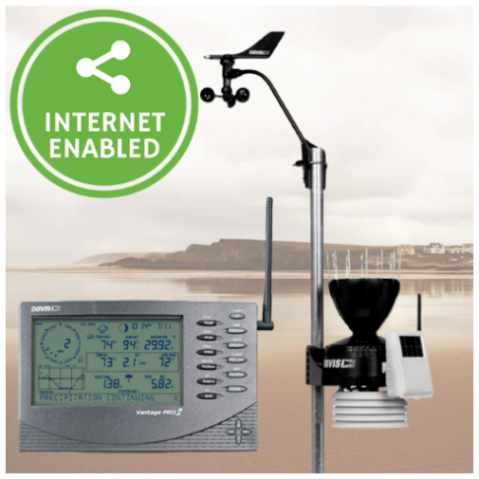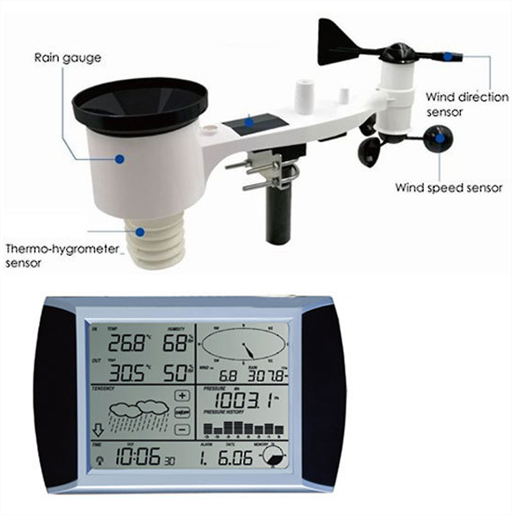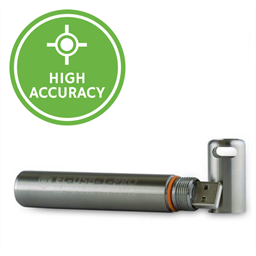Your Guide To Finding The Perfect Sensor – Part 1

A sensor is a device that detects and responds to a relevant input from the physical environment. Sensors can be tuned to any number of environmental parameters.
Sensors are used to monitor the world around us in a quantifiable manner. Various institutions, businesses and homeowners make good use of sensors to measure temperature, light, moisture, pressure, UV, humidity, current and a host of other environmental inputs. The output from sensors is generally a signal that can then be read on a suitable display, logger, or handheld device in an exploitable format.
To develop a guide to finding the perfect sensor, Instrument Choice decided to create a series of three articles. The first two cover many of the different categories of sensors available, (generally) how they work and the best applications for each. Within each category you’ll find alternative technologies you need to consider. For example, the two main technologies used in soil moisture sensors are capacitance and TDR (Time Domain Reflectometry). Each has its advantages and disadvantages.
In the third article of the series, we conclude with a checklist that our team of scientists developed after answering thousands of customer inquiries. It’s an effective way you can quickly narrow down your search to find the perfect sensor for your needs. Of course, if after scanning the series of articles you’re still not sure of the best sensor for your needs, Instrument Choice scientists are on hand to address any questions.
Common Types of Sensors
Temperature Sensors
Temperature sensors are used just about everywhere - in homes, transportation, learning institutions, electrical appliances, and electronic devices. They include refrigerators, stoves, hot water tanks as well as computers, GPS devices, battery chargers, and digital medical thermometers – to name a few.
The most common types of temperature sensors are thermocouples, thermistors and RTD sensors.
A thermocouple is a sensor that measures temperature. This type of sensor consists of two wire legs made from different metals with wire legs that are welded together at one end, creating a junction. This junction is where temperature is measured. When the junction experiences a change in temperature, a voltage is created. For a typical example of a thermocouple temperature sensor see the K-380 Immersion Thermocouple Probe for Temperature Meters.
.png?Action=thumbnail&algorithm=fill_proportional&width=262) A thermistor is a two terminal resistive transducer that changes its resistive value in response to changes in the surrounding ambient temperature. Hence the name thermal-resistor, or simply “thermistor”. Thermistors are often coupled with other devices, such as dataloggers. The HI147 Remote Sensor Thermometer is a good example of scientific instrument incorporating a thermistor in its food grade stainless steel thermistor probe.
A thermistor is a two terminal resistive transducer that changes its resistive value in response to changes in the surrounding ambient temperature. Hence the name thermal-resistor, or simply “thermistor”. Thermistors are often coupled with other devices, such as dataloggers. The HI147 Remote Sensor Thermometer is a good example of scientific instrument incorporating a thermistor in its food grade stainless steel thermistor probe.

RTD sensors are sensors used to measure temperature. Many RTD elements consist of a length of fine wire wrapped around a ceramic or glass core, although other constructions can be used. The RTD wire is a pure material, typically platinum, nickel, or copper. The material has an accurate resistance/temperature relationship which is used to provide an indication of temperature. As RTD elements are fragile, they are often housed in protective probes. Note; RTD sensors provide more accurate and reliable readings than thermocouples. A multifunction device that provides both RTD and thermocouple sensors is the DAQPro – 8 Channel Portable Data acquisition and logging meter.

Soil Moisture Sensors
Soil moisture sensors measure the quantity of water contained in a material, such as soil on a volumetric or gravimetric basis. Monitoring soil moisture benefits professionals such as environmental researchers, groups such as farmers, groundsmen, tourist operators, and archaeologists. Public regulators rely on such data to manage risk and plan. Soil moisture sensors also contribute data that plays an important role in helping to protect natural resources and understand our climate. The most common types of soil moisture sensors can be categorised as capacitance and TDR (Time Domain Reflectometry). Both technologies fall under the group of di-electric sensors. Here’s an idea of the difference between the two.
Capacitance soil moisture sensors (surprisingly… not) use capacitance to measure soil moisture. Simply, a probe generates an electric field, which is connected to a logger, is installed in the soil. Resulting changes in the device’s reading are a result of the soil’s capacitance due to its soil moisture level. Check out the IC-T-350 Soil Moisture Meter for an example of a sensor using this technology.
Time-domain reflectometry or TDR soil moisture is more sophisticated. Sensors deploy a measurement technique which correlates the frequency-dependent electric and dielectric properties of materials, such as the relationship of soil to its moisture content. Measurement usually involves inserting a sensor into the substance to be tested and then applying either Standard Waveform Analysis to determine the average moisture content along the sensor or Profile Analysis, to provide moisture content at discrete points along the sensor. A spatial location can be achieved by appropriate installation of several sensors. The IC-ACC-TDR-315L Digital TDR Sensor deploys this technique.

To be continued…
For an overview of pressure sensors, current sensors, and humidity sensors check out, “Your Guide to Finding the Perfect Sensor – PART 2”.
Click here
for information about weather sensors, pH sensors, conductivity sensors, voltage sensors and the Checklist, “5 Simple Questions – To Help You Choose the Best Sensor for Your Application”.
If this article has raised any questions you can’t answer quickly and easily, then contact a scientist.
Also interesting
Instrument Choice is Australasia’s leading independent supplier of scientific instruments to

Food safety is everybody’s business. Is doesn’t matter whether you store, cook, prepare, transport or sell potentially hazardous foods you need to know that the correct temperature is being maintained. A thermometer food probe is your key.

